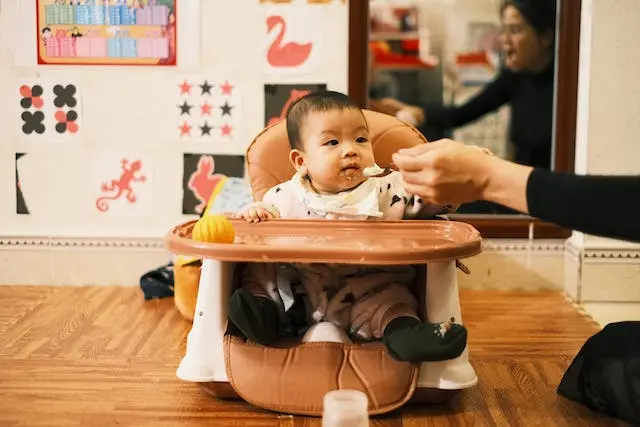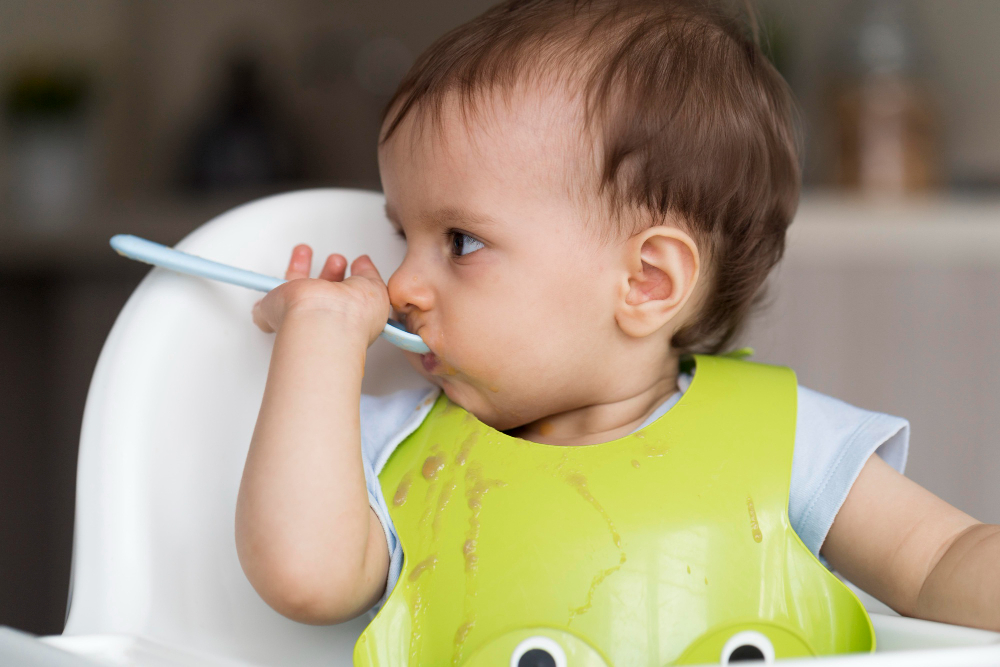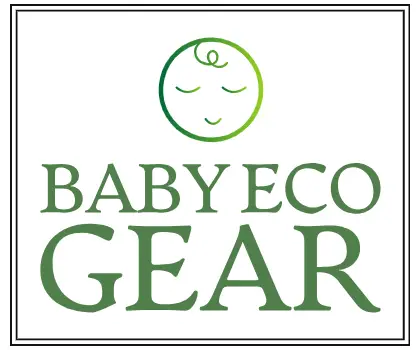Forget purees and spoonfuls! The world of baby food is evolving, and a revolutionary approach called Baby-Led Weaning (BLW) is taking center stage. This empowering method ditches the spoon and lets your little one explore the world of solids independently, fostering a healthy relationship with food from the very first bite.
But what exactly is BLW Weaning?
In short, BLW is all about allowing your baby to self-feed developmentally appropriate finger foods, starting around 6 months of age. Instead of mashed mush, your little one gets to experience the textures, tastes, and shapes of real food, developing important motor skills and a sense of independence along the way.
Why Choose BLW? The Benefits Are Mouthwatering!

The advantages of BLW Weaning go far beyond just skipping messy spoon-feeding. Here are some of the key benefits:
1. Motor Skills Development: Grasping, chewing, and manipulating food pieces strengthen fine motor skills, laying the foundation for future writing, dressing, and even playing.
2. Sensory Exploration: BLW Weaning engages all five senses, allowing your baby to discover the textures, smells, and tastes of different foods, leading to a more adventurous palate.
3. Self-Regulation: Babies learn to listen to their internal hunger and fullness cues, promoting healthy eating habits and preventing overfeeding.
4. Confidence and Autonomy: Baby led weaning empowers babies, giving them control over their food choices and fostering a sense of independence and self-reliance.
5. Reduced Risk of Food Pickiness: Early exposure to a variety of textures and flavors can help prevent picky eating in later years.
But When Do We Start?
The magic age for BLW is around 6 months, when most babies have developed the necessary reflexes and hand-eye coordination to safely handle and self-feed finger foods. Look for signs like:
- Strong head and neck control
- Curiosity about food
- Ability to grasp and transfer objects
- Interest in what you’re eating
Getting Started with BLW weaning : Your Essential Guide
Before diving into the world of BLW weaning , here are some crucial steps to ensure a smooth and successful journey:
1. Prepare your baby’s environment: Choose a safe, easy-to-clean surface like a highchair tray or playmat. Wear a washable bib and let the fun begin!
2. Offer developmentally appropriate finger foods: Think steamed veggies, soft fruits like banana or avocado, cooked pasta, and well-cooked pieces of meat. Avoid choking hazards like grapes, nuts, and round foods like hot dogs.
3. Be patient and supportive: Baby led weaning is a messy process! Embrace the chaos and let your baby explore at their own pace. Don’t force-feed or pressure them to eat; focus on the joy of discovery.
4. Follow your baby’s cues: Pay attention to hunger and fullness signals. Stop offering food when your baby loses interest or shows signs of being full.
5. Don’t stress about milk intake: Breastmilk or formula remains the primary source of nutrition during the first year of baby led weaning. Solids are for exploration and fun, not calorie-counting.
Remember: BLW weaning is a journey, not a destination. Some babies take to it immediately, while others may need a little more time and encouragement. Be patient, supportive, and most importantly, have fun!
Baby led weaning FAQs: Your Questions Answered
Is BLW Safe? Debunking the Myths and Ensuring Mealtime Magic
Baby-Led Weaning (BLW) has taken the parenting world by storm, but concerns about safety can linger. Fear not, adventurous eaters! When practiced with proper knowledge and supervision, BLW weaning can be a safe and enriching journey for both you and your little explorer.
Here’s the crucial fact: Baby led weaning isn’t inherently dangerous. In fact, studies suggest no increased choking risk compared to traditional spoon-feeding. The key lies in understanding the developmental stages of your baby and offering appropriate finger foods.
Safety First: The Essential Pillars of BLW weaning :
- Always supervise your baby during meals. This is non-negotiable, regardless of feeding method. Keep an eye out for any potential choking hazards and be prepared to intervene if needed.
- Know the “No-Go Zone”: Avoid offering round, hard foods like grapes, whole nuts, and uncooked carrots. These can pose a choking risk for young babies. Stick to soft, easily-manageable finger foods like steamed veggies, ripe fruits, and well-cooked pasta.
- Follow the “Pincer Grasp Rule”: Most babies develop the pincer grasp, crucial for safe self-feeding, around 6 months of age. If your little one hasn’t mastered this yet, wait a while before introducing baby led weaning.
- Embrace the mess (but not the mayhem): BLW weaning can get messy! Invest in a washable bib and a clean-up strategy, but don’t let the mess deter you. It’s part of the learning process and a sign of your baby’s exploration and engagement.
- Listen to your baby: Pay attention to their hunger and fullness cues. Don’t pressure them to eat if they’re not interested, and stop offering food when they seem full.

Peace of Mind: When to Seek Guidance:
While BLW weaning is generally safe, it’s always best to consult your pediatrician if you have any concerns. They can address your specific questions and provide personalized guidance based on your baby’s development and medical history.
Remember, BLW weaning is about empowering your baby to explore food at their own pace. By prioritizing safety, offering appropriate foods, and following their cues, you can create a safe and positive mealtime experience that fosters a healthy relationship with food for years to come.
So, ditch the spoon, embrace the exploration, and let your little one embark on the delicious adventure of BLW weaning with confidence!
What if my baby doesn’t eat much?
BLW weaning and the Appetite Adventure: Embracing Exploration, Not Expectation
One of the most common concerns with BLW weaning is the fear of babies not eating “enough.” But fear not, fellow parents! BLW weaning is about exploration, not about filling quotas. Here’s why:
1. Milk Matters Most: During the first year, breastmilk or formula remains the primary source of nutrition. Solids, whether through BLW or spoon-feeding, are for exploration and introducing your baby to new tastes and textures. Focus on the fun of discovery, not the amount they eat.
2. Hunger Cues Are Key: Babies are naturally attuned to their hunger and fullness cues. Trust your baby to listen to their internal signals and stop offering food when they seem done. Pressuring to eat can create negative associations with food and hinder their natural self-regulation.
3. Every Bite Counts: Even small bites of finger food offer valuable nutritional benefits and exposure to different flavors and textures. Remember, progress, not perfection, is the goal. Celebrate every bite, lick, and gum as a step on their delicious journey towards becoming adventurous eaters.
4. Development Takes Center Stage: BLW goes beyond just food. It fosters fine motor skills, hand-eye coordination, and independence. Focus on the developmental benefits, not just the calorie count. Seeing your baby grasp, explore, and experiment with food is a joy in itself!
5. Growth Comes Gradually: Some babies dive headfirst into BLW weaning, while others take a slower, more cautious approach. Be patient and supportive. Every baby develops at their own pace, and their appetite will naturally adjust as they explore and learn.
Remember: BLW is a journey, not a race. Focus on the positive aspects – exploration, discovery, and building a healthy relationship with food. Trust your baby, celebrate the milestones, and enjoy the messy, delicious adventure of baby led weaning!
Can I mix BLW with traditional weaning methods?
BLW and Beyond: Mixing Methods for a Delicious Journey
One of the beauties of BLW is its flexibility! While some parents dive headfirst into finger foods, others may prefer a more blended approach. The good news? Mixing BLW weaning with traditional weaning methods is absolutely fine. In fact, it can be a great way to cater to your baby’s individual preferences and ensure a smooth transition to solid foods.
Here’s why mixing it up can be a winning strategy:
1. Cater to Different Textures: Some babies might be hesitant about new textures, while others love the challenge. Offering purées alongside finger foods allows them to experience different textures and flavors at their own pace.
2. Gradual Transition: If you’re unsure about starting full-fledged BLW weaning, purées can be a helpful stepping stone. They provide familiarity while exposing your baby to new tastes and textures, easing them into the world of finger foods.
3. Nutritional Balance: Both BLW and purées offer different nutritional benefits. Purées can be a good source of iron and vitamins, while finger foods encourage self-feeding and develop fine motor skills. Combining both can ensure your baby gets a well-rounded nutritional experience.
4. Follow Your Baby’s Cues: Ultimately, the best approach is the one that works for your baby. Pay attention to their hunger and fullness cues, their interest in different textures, and adjust your approach accordingly.
Here are some tips for mixing BLW weaning and traditional weaning:
- Start by offering smooth, single-ingredient purées alongside soft, easily-manageable finger foods.
- Allow your baby to explore the finger foods at their own pace, without pressure to eat them.
- Don’t force-feed purées if your baby loses interest or shows signs of fullness.
- Gradually increase the complexity of finger foods as your baby’s skills and confidence grow.
- Most importantly, have fun! Mealtime should be a positive and enjoyable experience for both you and your little one.
Remember, there’s no one-size-fits-all approach to weaning. Mixing BLW weaning with traditional methods can be a great way to find a happy medium and ensure your baby has a delicious and enriching journey into the world of solids.
Where can I find recipes and resources for BLW?
Navigating the Delicious Jungle: Resources for Your BLW Explorer
With so much information and advice swirling around BLW, finding the right resources can feel like trekking through a jungle of mashed bananas and broccoli florets. But fear not, intrepid parents! We’ve got your compass ready to guide you to the tastiest and most reliable BLW resources:
Websites:
- Baby Led Weaning Blog: The OG of baby led weaning, this website offers a wealth of information, from detailed guides on starting BLW to troubleshooting tips and tons of delicious recipes. It’s like having Gill Rapley herself in your pocket! (URL baby led weaning recipes ON Baby Led Weaning Blog babyledfeeding.com)
- Solid Starts: This comprehensive site provides in-depth guides on all things BLW, from age-appropriate food choices to safety tips and interactive courses. Plus, their “What to Feed Baby” tool makes menu planning a breeze! (URL solidstarts com)
- Feeding Littles: This family-run website is a treasure trove of practical advice, with easy-to-follow recipes, helpful tips for picky eaters, and a supportive community of BLW parents. (URL feedinglittles com)
- Babyfoode.com: This website boasts a massive database of BLW-friendly recipes, all searchable by age, dietary needs, and even meal type. From breakfast pancakes to one-pan dinners, you’ll find inspiration for every hungry little adventurer. (URL jenny babyfoode com)
Books:
- Baby-Led Weaning: The Essential Guide by Gill Rapley: This book is considered the BLW bible, providing a comprehensive overview of the method, practical advice, and reassuring guidance for parents.
- The BLW Meal Planner by Claire Myser and Teresa Cirillo: This planner takes the guesswork out of mealtimes, offering weekly menus, shopping lists, and prep tips for busy parents navigating the BLW world.
- Food & Mess: An Adventurous Guide to Baby-Led Weaning by Sarah Ockwell-Smith: This fun and informative book celebrates the messy magic of BLW, offering playful recipes and tips for making mealtimes a joyful experience for both babies and parents.
Social Media:
- Instagram: Follow hashtags like #BLW, #babyledweaning, and #solidstarts for a constant stream of inspiration and tips from experienced BLW parents and professionals.
- Facebook: Join BLW support groups for a community of like-minded parents, where you can share questions, celebrate milestones, and get real-time advice.
Remember: When choosing resources, prioritize trusted websites and authors with a solid understanding of BLW principles and safety. Look for evidence-based information, a focus on developmentally appropriate foods, and positive reinforcement of your baby’s exploration and discovery.
With these resources at your fingertips, you’re well-equipped to navigate the delicious jungle of BLW and guide your little explorer on a tasty and enriching journey into the world of solid foods!
Baby-Led Weaning and Eco-Friendly Parenting: A Delicious Duo for a Sustainable Future

Baby-Led Weaning (BLW) and eco-friendly parenting might seem like two distinct concepts, but they share a surprising synergy. This empowering approach to feeding your little one can seamlessly align with your commitment to a greener planet, creating a win-win for your baby, your family, and the environment. Here’s how:
1. Less Waste, More Mess: BLW ditches the spoon and embraces finger foods, eliminating the need for disposable purées and pouches. This means less packaging waste, a smaller carbon footprint, and a lighter load on landfills. Yes, BLW weaning can be messy, but those splattered bits of broccoli florets signify exploration and discovery, not wasted food!
2. Local and Seasonal Delights: Infant led feeding encourages offering fresh, whole foods, often sourced locally and in season. This supports local farmers, reduces reliance on processed ingredients, and minimizes the environmental impact of food transportation. Imagine your little one munching on sun-ripened strawberries from the local market, a taste of your community and a nod to sustainability.
3. Less Meat, More Plants: BLW weaning naturally lends itself to a plant-based approach to weaning. Offering a variety of fruits, vegetables, legumes, and whole grains provides essential nutrients while minimizing meat consumption. This can significantly reduce your family’s carbon footprint and contribute to a more sustainable food system.
4. Mindful Eating, Reduced Food Waste: BLW fosters self-regulation and mindful eating habits. Babies learn to listen to their hunger and fullness cues, preventing overfeeding and food waste. This mindful approach translates into conscious food choices throughout life, benefiting both your family’s budget and the environment.
5. Celebrating Food, Reducing Consumption: BLW weaning is about exploration and enjoyment. By making mealtimes fun and interactive, you’re teaching your child to appreciate and respect food. This fosters a healthy relationship with food, potentially reducing impulsive consumption and food waste in the future.
Remember: Combining baby led weaning with other eco-friendly practices like composting food scraps and using reusable containers can further amplify your positive impact.
By embracing baby led weaning, you’re not just choosing a feeding method; you’re choosing a philosophy that aligns with responsible consumption and environmental awareness. It’s a delicious way to raise a curious eater and a responsible citizen, all while leaving a lighter footprint on our planet.
Bonus SEO Tip: Include relevant keywords like “eco-friendly parenting,” “local food,” “plant-based diet,” “sustainable food system,” and “mindful eating” to attract parents interested in both BLW weaning and environmental responsibility.
Conclusion: BLW weaning – A Delicious Path to Independence
Baby-Led Weaning is more than just a feeding method; it’s a philosophy for raising confident, adventurous eaters. By embracing BLW, you’re empowering your little one to explore the world of food on their own terms, fostering a healthy relationship with food that lasts a lifetime. So, ditch the spoon, grab some finger
foods, and get ready to embark on an incredible journey with your little foodie! Remember, Baby led weaning is a learning process for both you and your baby. Embrace the mess, celebrate the discoveries, and most importantly, enjoy the joy of watching your child explore the exciting world of independent eating.
But wait, there’s more! To make your BLW weaning journey even smoother, we’ve compiled some bonus tips and resources:
Bonus Tips for BLW Success:
- Invest in a good highchair: A sturdy chair with a removable tray is key for safe and comfortable self-feeding.
- Embrace the mess: BLW can be messy, but it’s also part of the fun! Lay down a washable mat or wear a waterproof bib to minimize cleanup.
- Get creative with finger foods: Don’t be afraid to experiment with different shapes, textures, and colors to keep your baby engaged.
- Make mealtime a family affair: Eat together as often as possible and let your baby observe you enjoying your food. This will help them develop positive associations with mealtime.
- Don’t compare your baby to others: Every child develops at their own pace. Focus on your baby’s individual journey and celebrate their milestones, big and small.
Additional Resources for BLW Enthusiasts:
- Websites:
- Baby Led Weaning Blog: https://www.babyledfeeding.com/
- Solid Starts: https://solidstarts.com/
- Feeding Littles: https://feedinglittles.com/
- Books:
- “Baby-Led Weaning: The Essential Guide”: by Gill Rapley
- “The BLW Meal Planner”: by Claire Myser and Teresa Cirillo
- “Food & Mess: An Adventurous Guide to Baby-Led Weaning”: by Sarah Ockwell-Smith
- Social Media:
- Instagram: @babyledweaning_blw, @solidstarts
- Facebook: Baby Led Weaning (BLW) Support Group
Remember, BLW is an exciting journey full of discovery and fun. So, arm yourself with knowledge, patience, and a healthy dose of laughter, and get ready to witness your little one blossom into a confident and adventurous eater!
Disclaimer: This article is intended for informational purposes only and should not be construed as medical advice. Please consult your pediatrician for any questions or concerns you may have about your baby’s development or feeding.
